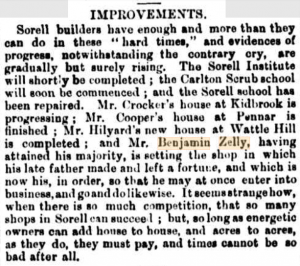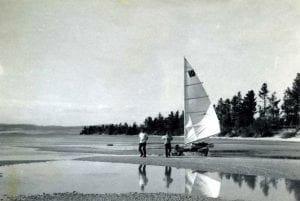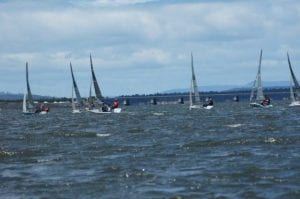Thanks to Greg Williams for writing this post for the A-Z challenge.
My 3X great Grandfather Benjamin ZELLEY lived at Sorell and was a Farmer & Storekeeper.
The name is unusual and originates from English 7th Century ‘Saelig’ meaning happiness & good fortune. There are many derivatives of the surname including Seely and Seli.
Ben was born in 1813 & baptised on 25th July 1813 at Shropshire England. He was transported to Van Diemen’s Land on the ship Argyle. For the crime of stealing & vagrancy, he was given life. He arrived as a convict with surname SULLY on 4th August 1831.
On 3 April 1838, Benjamin married Elizabeth King who was also a convict from the ship Westmoreland. Ben’s surname was Selley for this marriage. As they were both still convicts, they had to get permission to marry.
Benjamin’s brother Robert also came out as a convict on the ship David Clarke in 1841.
By August 1851, Ben was a respected landowner and was on a committee to use money raised under the Dog Act to erect a bridge or causeway across Salt Water Creek which is on the main road from Sorell to Richmond.
After 13 years of marriage Elizabeth died on 15 November 1851 at age 42 from consumption.
Ben married Eliza BYRON (1835-1881) on 1852 at St David’s, Hobart. His occupation was landholder and he said he was 30 years old while she was 18. Her father was John Byron who was a Superintendent of Police and buried at St Johns Church, Richmond.
In October 1854, Ben was appointed to be a member of a provisional committee for the newly formed Sorell Steam Navigation Company.
They had 3 children Mary Jane (1853-1874), Eliza Blanche (1855-1940) & Benjamin (1858-1941).
Ben senior passed away on 16 Jan 1859 & was buried at St George’s Church, Sorell. After his death, his property was sold. He also had shares in the Steam Navigation Company and corporate debentures due in the future.
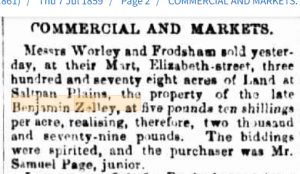
An obituary in the newspaper has his name spelt as ZELLY. He died at age 44 after a sudden illness. The notices mention he was an old and respected colonist. But the death record says he was fifty years old, a store keeper and died of natural causes.
As there were three young children to raise, Ben’s widow Eliza re-married in 1861 to John Talbot Coram.
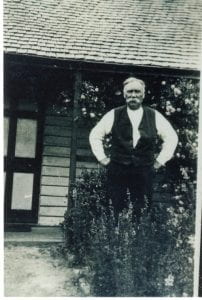
Readers: Do you know where his store was in Sorell? At the birth of his daughter in 1880, it mentions Fitzroy Store.
